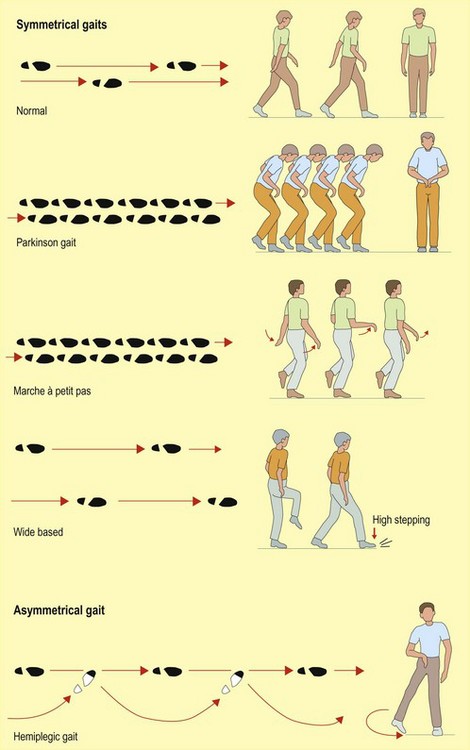Walking difficulties and clumsiness
Walking is very important to the way we live. The impact of losing this ability on a patient’s lifestyle can be readily appreciated. It is not surprising that the ability to walk independently is a prominent factor in all the scales of neurological disability.
Walking on two legs is a complicated process. It requires:
History
In taking the history of a patient with walking difficulties, consider particularly:
 the duration of progression of the gait disturbance documented by independent measures, such as aids used in walking and the distance that the patient is able to walk
the duration of progression of the gait disturbance documented by independent measures, such as aids used in walking and the distance that the patient is able to walkGait analysis
On watching a patient walk, the disturbance can be broadly subdivided into symmetrical and asymmetrical gait disturbances (Fig. 1).
Asymmetrical gait disturbances
1. Hemi-parkinsonian gait. The arm swing is reduced on one side, the posture is slightly stiff and the gait can be slightly hesitant.














